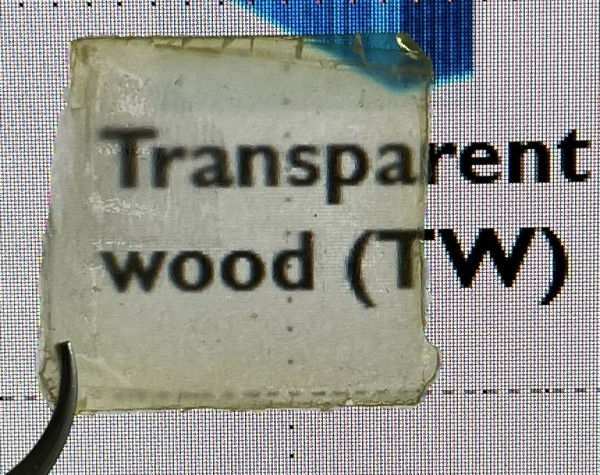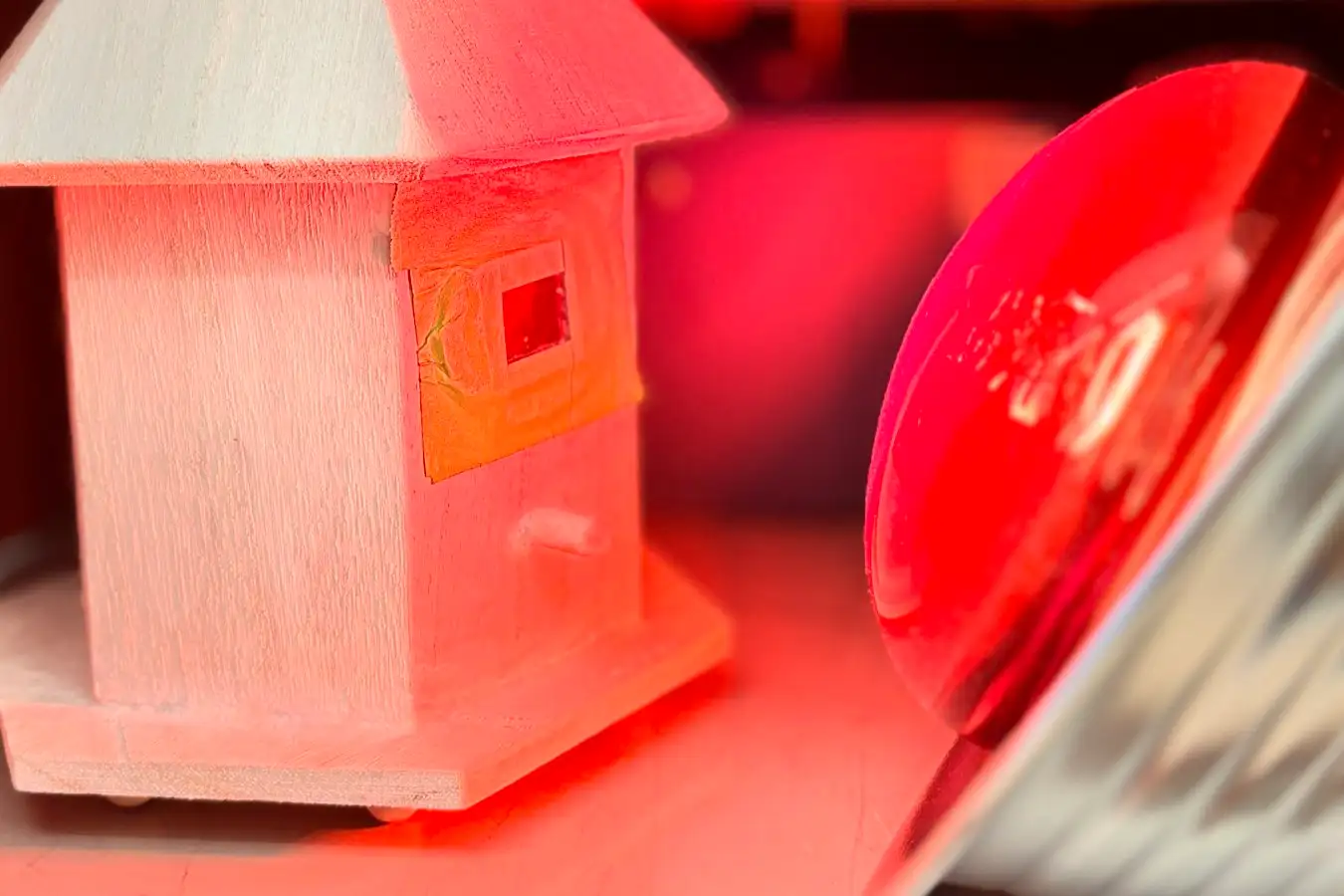In a world where plastic dominates almost every part of daily life—from phones to windows—finding a sustainable alternative is crucial. Researchers have now turned to an unexpected source: wood. By altering its natural structure, wood can become transparent, strong, and biodegradable, offering new possibilities for eco-friendly electronics and construction.
Until recently, transparent wood involved chemicals like epoxy, which aren’t biodegradable. Now, researchers have made transparent wood from natural, everyday materials like egg whites and rice, which are both renewable and compostable.
Transparent wood is not entirely new. Scientists have been experimenting with it for years, aiming to replace plastics and glass in homes and devices. Wood naturally contains three main substances: cellulose, hemicellulose, and lignin. Cellulose gives strength, while lignin and hemicellulose add stiffness and color.
To achieve transparency, scientists remove lignin and hemicellulose, leaving behind a paper-like, porous structure made mostly of cellulose. Previously, researchers filled these pores with plastic-like materials, which limited biodegradability.

A new approach changes that. Chemist Bharat Baruah from Kennesaw State University has developed a transparent wood made from fully natural substances. Inspired by ancient building methods in India, Baruah uses a mixture of egg whites and sticky rice as the filler.
These ingredients might seem unusual for modern technology, but they have proven effective for centuries. Buildings in Assam, India, from the 1500s still stand today, constructed using mortar made of sticky rice, egg whites, and sand. Baruah drew on this long-lasting strength, adapting it for modern use.
To create this new material, researchers begin with sheets of lightweight balsa wood. They place these sheets in a vacuum chamber, soaking them in a combination of common chemicals like sodium sulfite, sodium hydroxide, and diluted bleach. This process removes lignin and hemicellulose without damaging the cellulose structure.
Afterward, the porous cellulose framework is soaked in the egg white and rice extract mixture. A small amount of diethylenetriamine, a curing agent, ensures the filler remains transparent after drying.
Related Stories
The result is a flexible, durable, semi-transparent wood with a subtle brownish tint. Baruah notes, “It’s not 100 percent transparent, but it is semi-transparent. And it’s biodegradable.” Unlike plastic, this wood decomposes naturally at the end of its use, reducing pollution and waste.
Baruah emphasizes simplicity and affordability in this research: “[Previous examples of transparent wood are] very hard to synthesize, hard to make, and you spend a lot of time and energy and money… that’s why we thought about creating something we can make easily and naturally.”
Beyond biodegradability, transparent wood also performs better than glass in several ways. To demonstrate this, Baruah and his student Ridham Raval built a small birdhouse with a single transparent wood window.
Under a heat lamp, the temperature inside the birdhouse stayed cooler by about 9 to 11 degrees Fahrenheit (5 to 6 degrees Celsius) compared to an identical house with a glass window. This experiment suggests that transparent wood insulates better, meaning homes built with it would stay warmer in winter and cooler in summer, reducing energy bills.

These findings align with other research from 2020, where scientists also demonstrated transparent wood’s benefits over traditional glass. Traditional glass manufacturing is energy-intensive, producing approximately 25,000 metric tons of carbon emissions each year.
Transparent wood, however, is renewable, has a lower carbon footprint, and is about five times more thermally efficient. Furthermore, it withstands impacts better than glass, bending or splintering instead of shattering dangerously.
Transparent wood isn’t limited to windows and structural uses; it could also replace plastic in electronics. By embedding tiny silver wires, Baruah’s team gave the wood the ability to conduct electricity.
This innovation opens doors for transparent, biodegradable electronics, such as wearable health sensors or eco-friendly solar cells. Silver isn’t biodegradable, but future research could involve using graphene, another conductive yet more environmentally friendly material.
Baruah remains optimistic about the material’s potential: “In the modern day, plastic is everywhere, including our devices that we carry around. And it’s a problem when we reach the end of that device’s life. It’s not biodegradable. So, I asked, what if we can create something that’s natural and biodegradable instead?”
Despite these promising results, transparent wood is still a developing technology. One challenge is improving transparency. While current samples are semi-transparent, achieving clearer wood will require further refinement of the treatment process.
Another area for improvement is the strength and thermal properties, as researchers continue exploring different wood types and filling mixtures. Transparent wood can be produced from various trees, including balsa and oak, making it adaptable for many uses, from windows to building walls.
Additionally, transparent wood could be integrated into advanced applications like roofing, solar panels, and smart devices. Its lower thermal conductivity and superior strength compared to glass make it attractive for modern, sustainable architecture.
Entire buildings could feature transparent wooden facades, offering comfortable indoor lighting and better insulation. Transparent wooden roofs might evenly illuminate interior spaces, significantly cutting electricity use.
Beyond its physical advantages, transparent wood offers substantial economic and environmental benefits. The simplicity of Baruah’s natural method reduces production costs compared to earlier, chemically intensive methods.
Transparent wood’s compatibility with existing manufacturing equipment also means industries could adopt it without costly transitions. Its biodegradability addresses growing concerns about plastic waste, helping reduce environmental harm.
Baruah stresses affordability and accessibility, especially for educational research: “I want to send a message to my undergraduate students that you can do interesting research without spending thousands of dollars.”
With all these benefits, transparent wood is shaping up as one of the most exciting materials for the future. Homes, electronics, and countless other products might soon rely on this renewable resource, helping combat environmental challenges while boosting efficiency.
Transparent wood could become the window, phone screen, or even wall of tomorrow, clearly marking a new direction in sustainable technology.
The researchers will present their results at the spring meeting of the American Chemical Society (ACS).
Note: The article above provided above by The Brighter Side of News.
Like these kind of feel good stories? Get The Brighter Side of News’ newsletter.
The post Transparent wood looks to revolutionize home construction and personal electronics appeared first on The Brighter Side of News.